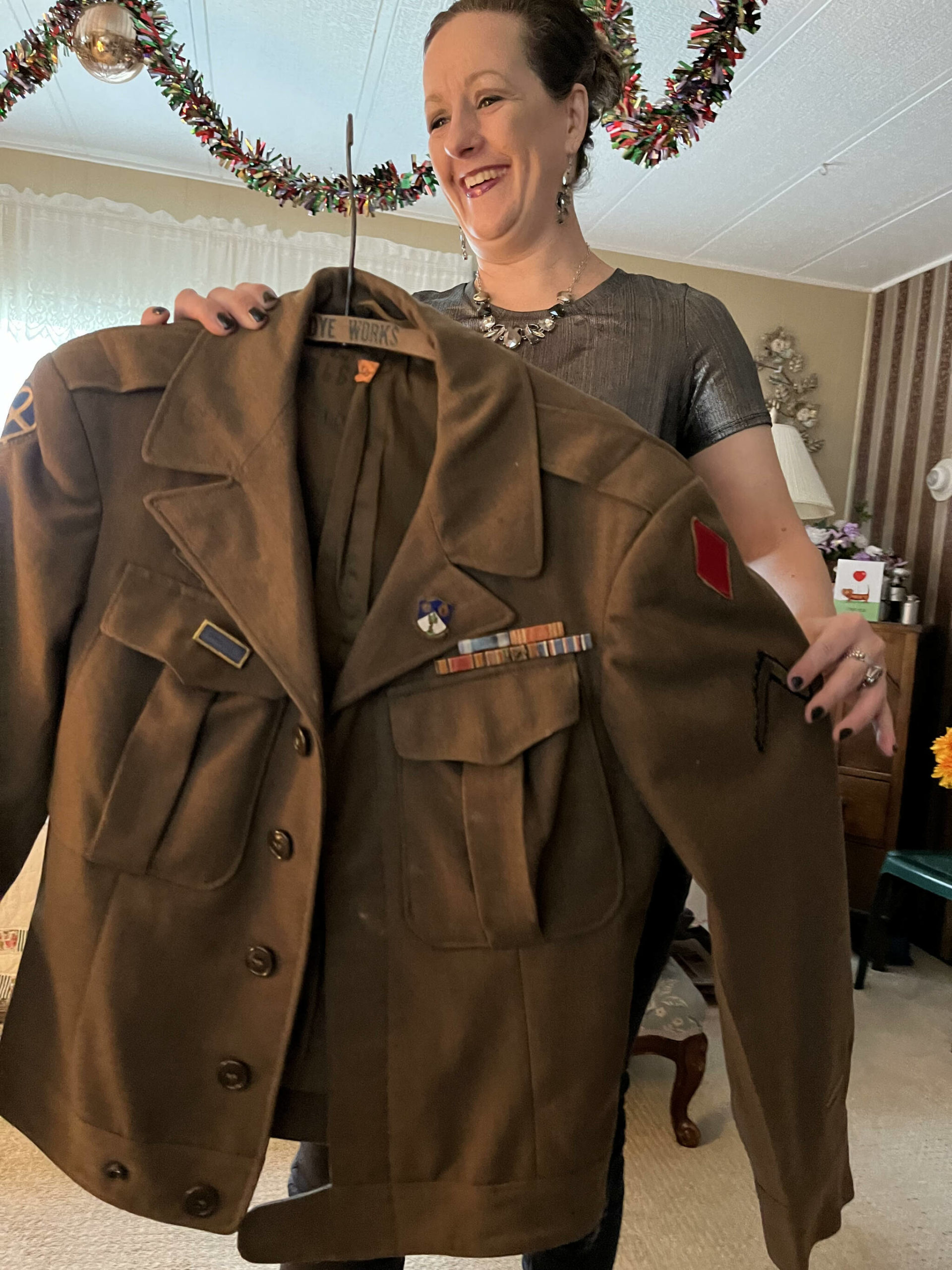Those who served in World War II have been revered ever since as “The Greatest Generation,” which couldn’t be more true to a local paraprofessional.
Jeri Bogar, who works for Elma Middle School, says her grandfather, U.S. Army Private First Class Harold Ralkey — a World War II veteran — is the greatest man she’s ever known.
“My grandfather is a true hero,” she said. “He risked his life for his country. I’m so grateful and honored to not only have him as my grandfather, but my hero.”
Ralkey, 97, spoke a little about his experience in the Army, which sent him from Fort McClellan, in Anniston, Alabama, to Washington, D.C., in the spring of 1944. After weeks of training stateside, Ralkey went with the 35th Infantry Division — and later the 5th Infantry Division after a transfer — and then to Europe.
After training for weeks in England, Ralkey and his “Red Devils,” from the 5th Infantry Division, stormed the beaches at Normandy on July 9, 1944, a little more than a month after D-Day. The defensive stand the Germans made was a formidable one in July, just as they were during D-Day — June 6, 1944 — the largest amphibious invasion in the history of war.
“The Germans (were) really dug in there,” Ralkey said. “I’ll tell you, it was not easy.”
Carol Bogar, Ralkey’s daughter, talked about a conversation she once had with him about storming the beach at Normandy.
“Those Germans were pretty smart,” she said, recalling the conversation. “They were just sitting there waiting for them to come up with their boats.”
Carol said Ralkey told her a lot of the soldiers didn’t make it out of their boats and onto the beach because of the gunfire.
Ralkey said it took inside an hour to get off the beach and past the German defense, which consisted of Czech hedgehogs — the metal, angled x-shaped beam anti-tank obstacles.
“The feelings wasn’t good,” Ralkey said. “We (then) fought all through France.”
The U.S. Army’s 5th Infantry Division — seen with a red diamond patch on the troops’ uniforms — spent 270 days in combat across Europe from July 1944, according to the U.S. Army Center of Military History.
The division advanced through Northern France, the Netherlands and Germany.
Ralkey — who didn’t seem to remember many details — said that he walked through France, the Netherlands and Germany, until he and his division met the Russians at Elbe River in Germany.
During Ralkey’s time in Europe, the cold weather caused nerve damage in his feet.
“That’s where I froze my feet all to pieces,” Ralkey said. “I put a lot of miles on them feet. They almost got frozen in the war.”
But, he can still walk without the use of a cane or walker.
Ralkey also talked about how his division left the United States.
“We went over,” he said about his division’s trip across the Atlantic Ocean. “They loaded us on an Italian boat. We went 26 days from here to Scotland.”
After the boat arrived in Scotland, the division was sent to England, where it trained for about six more weeks.
Jodi Sund, who is Ralkey’s oldest granddaughter, called him “a true hero.”
She said it is very interesting what her grandfather did for the country while in the Army and is impressed by what he remembers about his time fighting in Europe.
In addition to being a war hero to his granddaughters, Jodi said Ralkey, and his late wife Geraldine — who he was married to for 70 years until her death, are great grandparents.
“We couldn’t ask for better grandparents,” she said.
Ralkey apparently has made quite the father too.
“Us kids were really blessed to have such good parents,” Carol said.
Fred Rakevich, a family friend and Korean War Army Veteran, talked about the respect he has for Ralkey.
“I’m honored to be in the presence of Harold,” Rakevich said.



